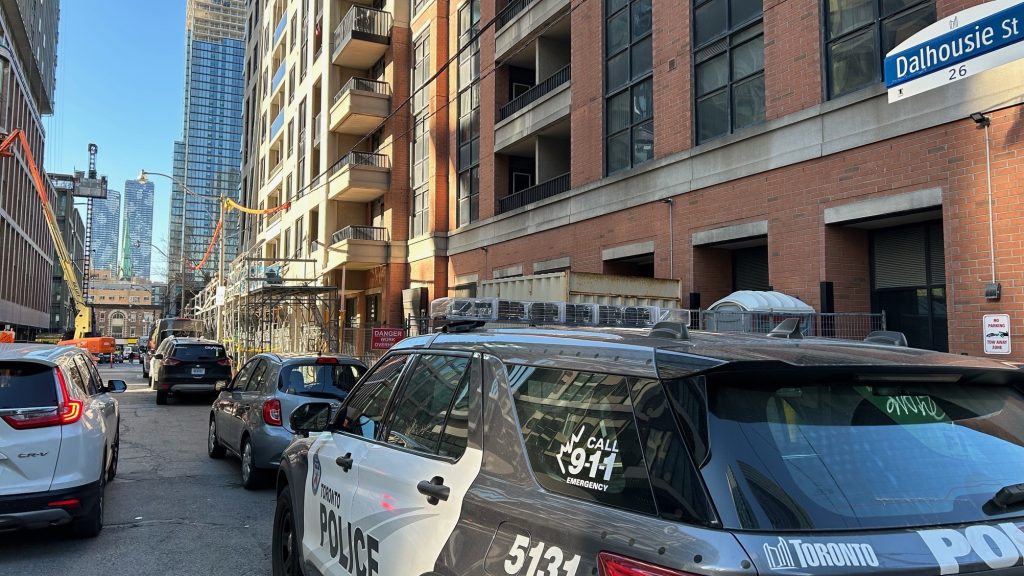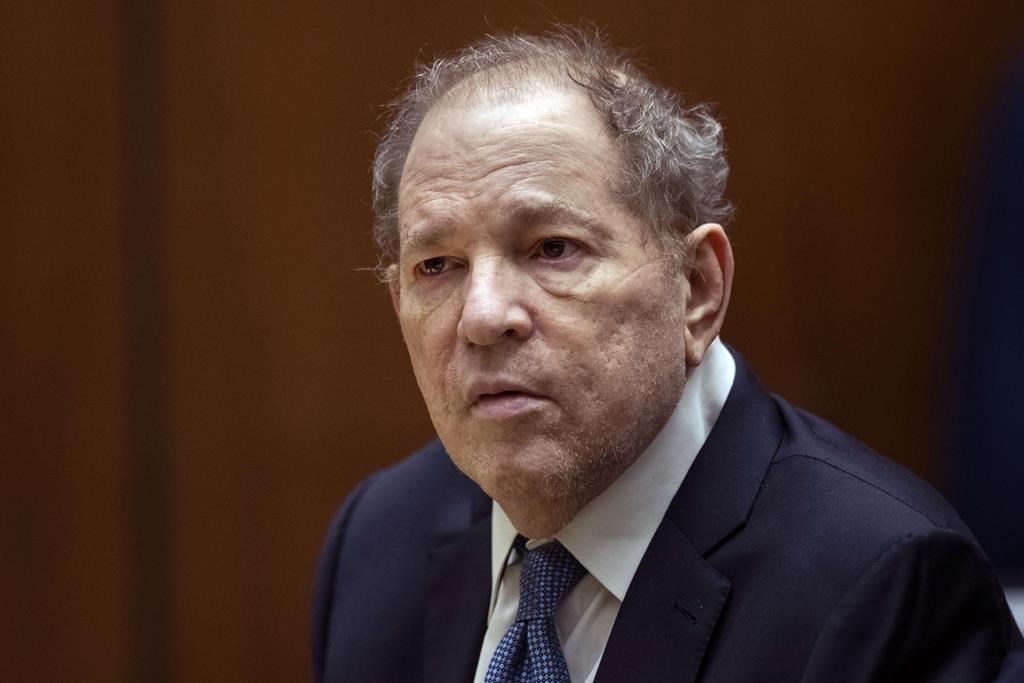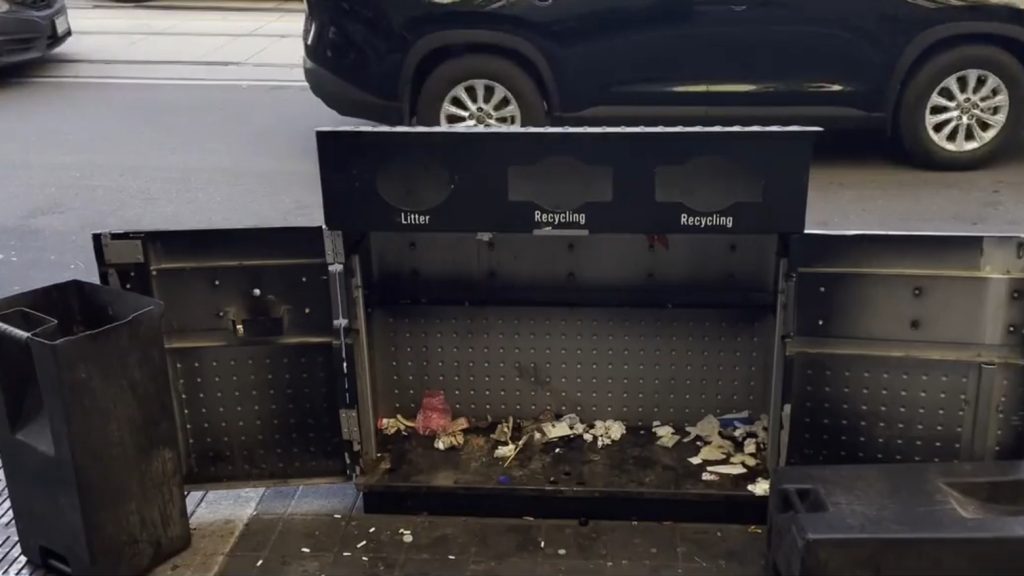Toronto may never see body-worn camera police footage
Posted April 21, 2021 5:41 pm.
Last Updated April 21, 2021 5:50 pm.
Canadians are watching as footage from U.S. officers’ body-worn cameras are released days, or even hours, after police have shot and killed people of colour.
But in Toronto, even as more police wear cameras, experts say it’s unlikely the public here would ever see video that fast – if at all.
“Any time it’s a serious incident, it goes directly to the Special Investigations Unit (SIU). You might not hear about it for six months, nine months, whatever the case may be,” said Erick Laming, a criminologist specializing in police reform at the University of Toronto. “This greatly differs from the U.S. in most jurisdictions.”
The Toronto Police Service has been working on equipping all frontline officers with body cameras since August 2020. So far nearly 40 per cent, or 850 police officers, have the cameras, with the rest expected by October of this year.
The police service has also publicly released its policy on the cameras, a first for the organization. It states that in cases of alleged police misconduct, or use of force, such as a police shooting, Ontario’s SIU decides whether or not to release footage.
“I have concerns that the public would be deprived of the ability to know what exactly happened,” said Fareeda Adam, a lawyer with the Black Legal Action Centre. “It’s important to get that information out at the beginning so that the narrative around the incident can really be talked about in a meaningful way.”
In a statement, SIU spokesperson Monica Hudon said the decision to release is complicated by the need to ensure investigations into police conduct, and any resulting court cases, aren’t compromised.
“Disclosure will have to be assessed on a case-by-case basis,” Hudon wrote.
Superintendent Michael Barsky, head of Toronto’s body-worn camera project, said that in cases where there are public safety concerns, the police chief could ask the SIU to release the footage.
RELATED: Toronto police release guidelines on use of body-worn cameras
“This an opportunity for us to be outward facing, it’s an opportunity for the chief to be able to evaluate and assess the opportunities for good news and sometimes bad news stories,” said Barsky.
However, as the rules surrounding the SIU’s investigations into police incidents stand, SIU investigators could have difficulty getting the footage themselves.
In a SIU investigation, one or more “subject officers” are usually the focus of the investigation. Subject officers can say no to being interviewed by investigators, and they don’t have to turn over their notes about what happened.
This has resulted in at least one dispute over footage between the SIU and Durham police. The service eventually handed over the footage.
The potential loophole “casts some real doubt over the transparency of the process,” said Adam. “If we’re all in this together, then the police as well as the public would want to know what happened.”
The SIU said all police services have a duty to comply with their investigations, including by handing over bodycam footage.
“While there may be issues that need to be resolved in this area, such as the extent of the SIU’s entitlement to body camera footage of events after an incident has occurred, the SIU has to date received the footage it needs to assist in its investigations,” wrote Hudon.
Barsky said before the service hands over any footage to the SIU, an internal liaison officer reviews the video to see if any parts of it could be considered part of a subject officer’s notes.
“For the most part, body-worn camera footage is released to the SIU,” he says. He adds that other factors, such as a citizen’s privacy, must be considered before a video is released to the public.
Once the SIU is done investigating, Toronto police policy states the service can release the footage where a “compelling public interest” exists, such as in cases of excessive or improper use of force allegations or misconduct.
However, the police chief gets the final say on whether footage is released. If the chief decides against it, they must explain why. Anyone who interacts with a police officer wearing a body camera can also apply to get the footage once the investigation is over.
Experts say Toronto’s bodycam policies have to balance the interests of a fair investigation under Canadian legal rules around due process. But what many are hoping body cameras will do – prevent police abuse – may not be realistic, said Adam.
“If we’re looking to body-worn cameras to prove or to change police behavior I think we’re knocking at the wrong door,” she says. “The research that we have so far tells us that police behavior actually does not change.”
She notes body camera footage isn’t always helpful or objective. She points to Derek Chauvin, the former Minneapolis police officer now convicted of murdering George Floyd, in an incident that sparked worldwide calls for police reform.
Chauvin and the officers around him were wearing body cameras. In the Chauvin case, Adam said it was bystander video taken of the nine-and-a-half minutes the officer kneeled on Floyd that provided a clear point of view and ultimately aided prosecutors in getting a conviction.
“What we want is not simply an objective account or an ability to watch a Black person or a person of color or an indigenous person or any person frankly lose their life,” she said. “We want accountability, we want the person who is responsible for the loss of life to be held accountable for their behavior. Body-worn cameras are potentially a step in the right direction but, but not enough.”
Laming said research shows body camera footage has been used by police services to control narratives about events, and also as a promotional tool.
“I don’t want to paint the picture of the police are only trying to win hearts and minds, but clearly that’s a huge benefit to body camera footage,” Laming said.
He said in the recent shooting of 13-year-old Adam Toledo, it wasn’t the police force, but Chicago’s Civilian Office of Police Accountability, that released bodycam footage. He suggests that in Toronto, an independent group could be given say about releasing footage in such situations, to reduce the conflict of interest.
He adds that while Toronto’s policies appear to be well thought out, he’s concerned that there isn’t a clear definition of what “compelling public interest” means. Further, that standard could allow lesser-known cases to fall through the cracks – as police react to ones with existing public pressure.
“You’re rarely ever going to see the police put something out there that nobody knows about,” he said.
Barsky said since Toronto’s cameras started being rolled out last year, the police service has yet to get a request to publicly release footage and hasn’t released any so far.
“We’re very prepared, but time will tell. We’re always open to being better,” he said.










